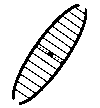 |
|
Desaru
ship |
19 July 2003
|
|||
| Last modified: 19 July 2003 |
The estimated date of the wreck was revised more than once during the course of the investigation, and this process may be of interest. The ship is is currently thought to have sunk in the 1840s.
Carbon 14 dating was never considered helpful for this site. Its best possible 135-year range, at 95% probability, during which any one year is as likely as any other, would not have been much use given the relatively young age of the wreck. Instead, the site was dated initially by its youngest coin and stylistic comparisons of the ceramic cargo - and amended on evidence from the cannon.
The fifteen ceramics recovered during the surface investigation suggested a date late in the Qianlong period (1736-1795). Opinions of various experts, among them Professor Zhang Pusheng who inspected every piece, supported the middle of that reign. Coins found later with the reign mark of emperor Qianlong were consistent. However, similar and identical ceramics had been found on the Tek Sing (sunk in 1822) and particularly the Diana (lost in 1817), both of which were precisely dated by historical records, and this pointed to a somewhat later date.
During excavation, coins were found with the reign mark of emperor Daoguang (1821-1851), thus setting the earliest date for the wreck and confirming an extended production period for some of the ceramics found on board. The date of the ship's loss was now tentatively estimated at c.1830. The German stoneware bottle dated to c.1800 provided some support, on the basis that a ceramic bottle in circulation was unlikely to survive indefinitely.
During recent cleaning of the Desaru cannon, the number 1840 was seen engraved in one of its trunnions, possibly indicating its manufacturing date. The revised, tentative date for the loss of the desaru ship is therefore c.1845.
A useful lesson was learned from this dating exercise. The many expert views in favour of an earlier date demonstrated again that certain types of Chinese ceramics remained in production over a long period, and that long production runs continued well into the 19th century.
In view of the unusual structures seen on the Desaru ship, it would have been valuable to have more information on similar shipwrecks excavated in the region. The Tek Sing, sunk in Indonesia in 1822, fully loaded with Chinese ceramics, could have been an additional source of information. The sales catalogue focuses mainly on the commercial cargo, and the only information provided from the seabed investigation is that the ship was about fifty metres long and divided by transverse bulkheads into 'about' fifteen compartments. If in fact this were so, each compartment would be about three metres wide - indeed a remarkable and interesting comparison with those on the Desaru ship, which were seventy-five centimetres wide. It would have been helpful and rewarding if further detail of the Tek Sing's structure had been published.
The salvage of the Diana (1817) also provided little information about the ship. The salvor reported that all ship's timber had rotted away and therefore there was nothing to record - but also that the ship was built from Jarrol wood! Although built in India, the Diana could also have shed light on contemporary shipbuilding techniques.
However, two other shipwrecks provide some information. Although looted before investigation, they show similar bulkhead frames to those on the Desaru ship. The 'Tuara' wreck had no evidence of a supporting frame for the ceiling planks, while the 'Pinggang' wreck had no evidence of additional hull planks. These ships, both of Chinese construction, were dated to the late eighteenth century based on the few ceramic shards remaining.(1)
| Desaru ship overview | Maritime Asia homepage | Bibliography |